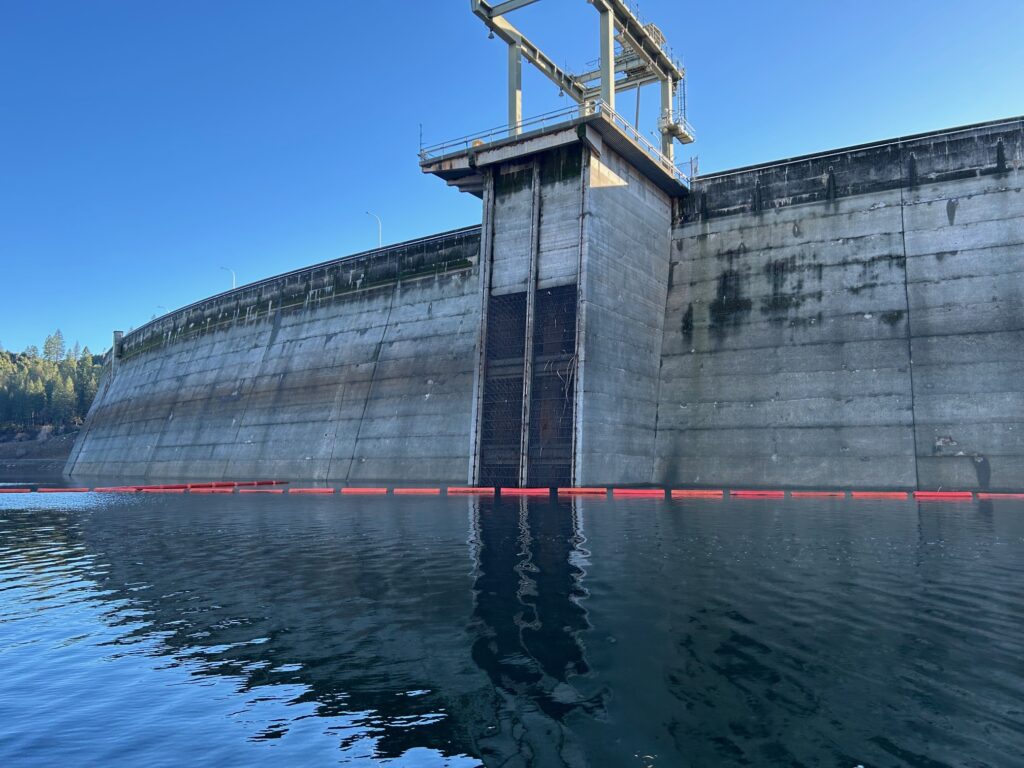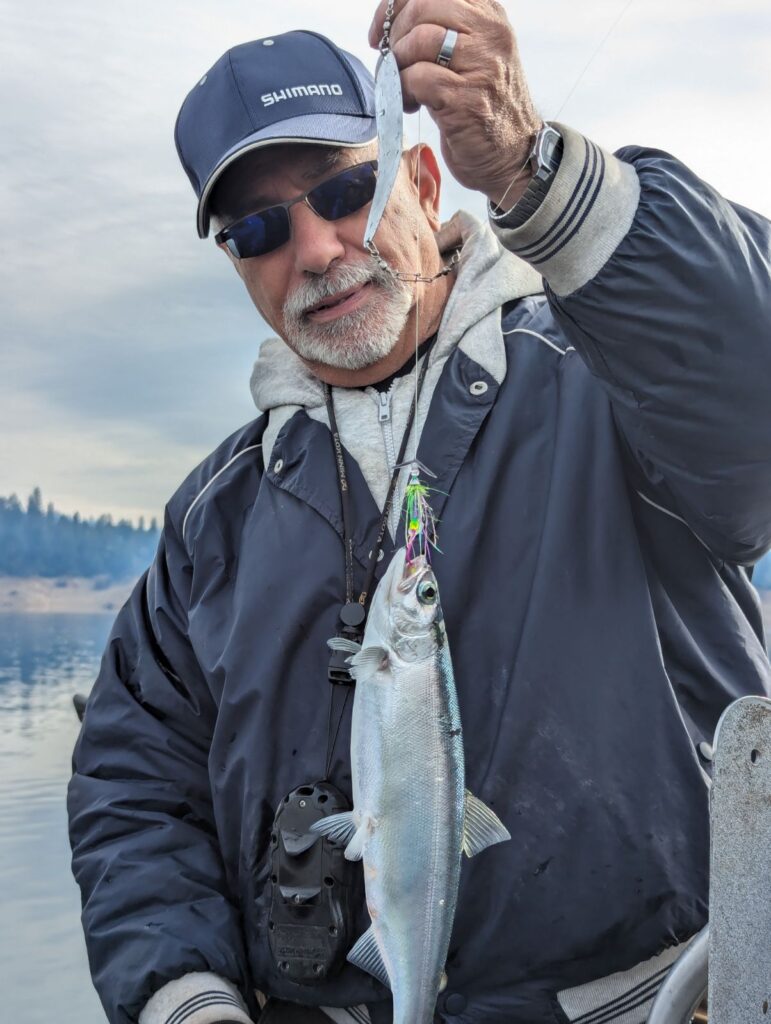Kokanee? Cold? Winter Fishing For Landlocked Sockeye Is Real
The following appears in the February issue of California Sportsman:

By Mark Fong
Yes, winter kokanee fishing in Northern California is really a thing.
Several years ago, I heard the faint rumblings that diehard kokanee anglers were braving the elements and being justly rewarded with good catches of fish during the dead of winter. As a relative newcomer to the ways of the kokanee, my on-the- water adventures have only taken place during the traditional season, which spans from late spring through the early fall.
Wanting to know more about the winter fishery, I reached out to my go- to kokanee guru, Dan Valdez. Valdez is the owner and proprietor of Draggin’ Flies by Dan (facebook.com/p/Draggin- Flies-by-Dan-100057077874828), premium hand-tied kokanee and trout trolling flies.
HIDDEN IN PLAIN SIGHT
“Within the last five years or so, people have become aware that even though the prior season’s spawning kokanee are done, the 1- and 2-year- old fish hang back; those fish still need to continue to eat and survive and so they are accessible to catch,” Valdez says.
“I would say that Whiskeytown and Bullards Bar are the primary lakes where you can have success, although I do know of some other fisheries, like Berryessa and New Melones, where you can catch them as well.”
Valdez is a firm believer that social media is a big factor driving up the interest in winter kokanee. “So nowadays a guy goes out trolling and catches a nice bag of fish, and he posts on the internet,” he says. “Well, that didn’t happen 10 to 15 years ago. I think there are more people out trying winter kokanee because they hear that people are doing it and having success.”
Still, winter kokanee fishing is not for the faint of heart.
“The difference between summer and winter kokanee fishing is about 50 degrees,” jokes Valdez. “It’s generally near freezing or freezing when you get out there and you need to have the right clothing and the proper mindset to deal with the conditions. I’m one of those guys who has gotta fish as much as I can, so as long as the weather permits, I am gonna go fishing.”

WINTER KOKANEE TIPS
While winter kokanee may be smaller in size relative to their summer cousins due to the growth cycle, they are challenging to catch, fight hard and make excellent table fare. With a few adjustments, you too can be on your way to success.
“Kokanee are like us: They need to eat every single day, whether or not the conditions are optimum,” says Valdez. “I think what they do is ride the thermocline in the areas that are most optimum for them and the zooplankton that they eat. I like to target fish where there is current or an influx of water. Points are good areas because they can congregate the plankton into pockets; it’s like a big old bowl of soup right there. The fish hang out on those points where the current and topography gathers all that food for them.”
“During the winter, the fish are less active than they are when the water is warmer in the summer,” Valdez adds. “They will not travel as far to chase and eat a lure. For example, in the summer, you may have your presentation down at 50 feet, but the fish are marking at 70 feet. Because of the temperature and the clear water, those fish have the ability to see your presentation and will chase it 20 feet. In the winter, those fish are less active and the water is generally not as clear. You must be way more precise with your presentation. If you are marking fish at 70 feet, you want to run your baits at 70 feet.”

SPEED’S THE KEY
According to Valdez, trolling speed is another important variable. If your presentation is not right in the fish’s face, they’re probably not gonna strike. This time of year he limits his trolling speed to 1.0 to 1.4 mph.
“If you have good electronics and you are running your rigs at the proper depths, then do not troll in a straight line,” Valdez says. “Kokanee are notorious for just tracking your presentation. Make some sort of movement: zigzag, figure eights, circle. The idea is to create an erratic change of direction, which is an effective method to trigger them to strike and will increase your overall bite rate.”

Valdez also advises that if you find a group of fish in the winter, one of the worst things you can do is to leave them. Unlike summer, when plankton is distributed very evenly, kokanee congregate in big groups. These are akin to big giant highways, where you can see school after school after school.
In the winter, it is just not that way, as the water temperature and currents work together to create areas where plankton is concentrated in very specific locations. When you find a significant group of fish, work them until they stop biting or disappear altogether. In the summer, you may find four or five schools in a cove, whereas in the winter it is more likely that you find a group of 50 to 100 fish, but if you go 100 yards there will be no fish there.
If you love kokanee and have not pursued them during the offseason, it’s not too late to join the party. CS



